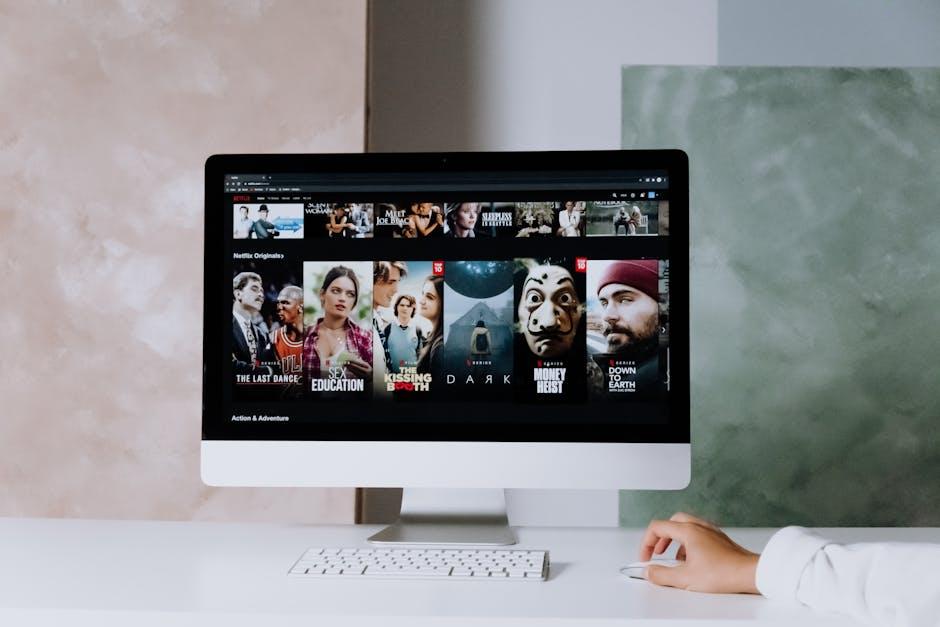In the ever-evolving landscape of digital entertainment, Netflix has consistently been at the forefront of innovation, reshaping how audiences consume content. Recently, however, the streaming giant has ventured into a more traditional territory by experimenting with weekly releases, a move that has sparked considerable debate among its global subscriber base. As Netflix navigates this strategic shift, the question arises: Should the company abandon this approach and return to its original binge-watching model? This analytical exploration seeks to unpack the implications of both strategies, weighing the potential benefits of sustained viewer engagement against the cherished freedom of instant consumption. By examining industry trends, audience preferences, and competitive dynamics, this article aims to shed light on the path forward for Netflix, with an optimistic view of how it might continue to captivate its audience in a rapidly changing digital era.
Evaluating the Impact of Weekly Releases on Viewer Engagement
In assessing the impact of weekly releases on viewer engagement, it’s essential to consider how this strategy influences audience anticipation and content retention. Weekly releases create a structured viewing schedule, fostering a sense of community among viewers who eagerly await the next episode. This approach can enhance engagement through:
- Heightened Anticipation: Viewers are more likely to discuss and speculate about upcoming episodes, creating buzz and drawing in new audiences.
- Extended Viewing Duration: By spacing out episodes, the content remains relevant over a longer period, keeping viewers engaged with the platform.
- Community Building: Weekly releases encourage the formation of fan communities that thrive on discussion and shared experiences.
While binge-watching offers immediate gratification, weekly releases might cultivate a deeper, more sustained engagement. The strategic choice between these models could significantly influence viewer loyalty and content longevity on streaming platforms.

Understanding Binge-Watching: A Deep Dive into Audience Preferences
In the era of streaming dominance, the allure of binge-watching has redefined how audiences engage with their favorite shows. The phenomenon offers an immersive experience, allowing viewers to dive deep into storylines without the interruption of weekly waits. Binge-watching caters to the modern viewer’s desire for instant gratification, a reflection of our fast-paced, on-demand culture. It provides a sense of continuity and emotional connection, where the momentum of storytelling can build without pause, creating a more impactful narrative experience.
On the other hand, the traditional weekly release schedule fosters anticipation and community discussion, allowing audiences to savor each episode and speculate on future developments. However, with the current trends indicating a preference for immediate consumption, streaming platforms like Netflix might benefit from revisiting their roots in binge-release strategies. The shift could attract a broader audience base, as evidenced by the following preferences:
- Instant Access: Viewers prefer having the entire season available at once.
- Flexibility: Binge-watching offers the flexibility to watch at one’s own pace.
- Enhanced Engagement: Continuous viewing can lead to higher emotional investment in the storyline.
Ultimately, the decision to embrace one model over the other should be guided by audience insights and the evolving landscape of content consumption. By understanding these preferences, Netflix can strategically position itself to capture the attention of both traditionalists and modern viewers alike.

Balancing Content Strategy: Lessons from Competitors and Industry Trends
In analyzing Netflix’s content strategy, it’s crucial to examine the approaches of competitors and evolving industry trends. Streaming platforms like Disney+ and HBO Max have found success with weekly releases, creating a buzz and fostering sustained viewer engagement. This episodic model encourages community discussions, social media interactions, and prolonged subscription retention, as viewers return week after week. However, binge-watching, a hallmark of Netflix’s early success, offers its own set of advantages, providing instant gratification and encouraging marathon viewing sessions that keep audiences glued to their screens.
To strike a balance, Netflix might consider a hybrid approach, blending the immediacy of binge-watching with the anticipation-building of weekly drops. Key considerations include:
- Content type: Series with complex narratives may benefit from weekly releases to allow viewers time to digest and discuss each episode.
- Audience preferences: Catering to diverse viewer habits by offering both release models can broaden Netflix’s appeal.
- Competitive edge: Analyzing the success metrics of rivals can help in crafting a strategy that leverages Netflix’s strengths while adapting to market demands.
Ultimately, the decision should be guided by a nuanced understanding of audience behavior and the competitive landscape, ensuring that Netflix remains at the forefront of the streaming revolution.

Strategic Recommendations for Netflix: Optimizing Release Models for Success
In the evolving landscape of digital streaming, Netflix faces the critical task of striking a balance between traditional binge-watching and the increasingly popular weekly release strategy. Each approach offers distinct advantages that could drive subscriber engagement and retention. Binge-watching, Netflix’s original hallmark, allows for immediate gratification and can create a cultural zeitgeist, where viewers are propelled into a frenzy of discussion and speculation, driving social media buzz. This model supports the rapid consumption of content, encouraging viewers to subscribe for immediate access to entire seasons, thus potentially boosting short-term subscriptions.
On the other hand, weekly releases can enhance long-term subscriber loyalty by fostering anticipation and sustained engagement over time. This model allows for the creation of episodic events, encouraging viewers to return week after week, thus extending the lifespan of a show’s popularity. Moreover, it provides a consistent influx of content, preventing the dreaded “content drought” that subscribers sometimes experience after a binge. For Netflix, the key might be in a hybrid strategy that leverages both models depending on the genre and target audience, allowing flexibility and maximizing the strengths of each approach. By tailoring release models to suit specific content, Netflix can optimize viewer experience and continue to thrive in the competitive streaming market.







































